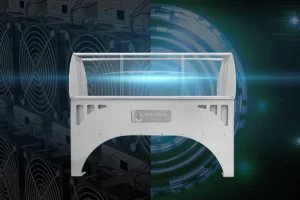Comparative Analysis: Single-Phase vs. Two-Phase Immersion Cooling
In the dynamic world of data center cooling, two groundbreaking technologies have emerged as game-changers: Single-Phase Immersion Cooling and Two-Phase Immersion Cooling. This article will explore both technologies, comparing and contrasting their advantages and use cases.
Single-Phase Immersion Cooling: Efficiency Meets Simplicity
Advantages:
- Simplicity: Single-phase immersion cooling is elegantly simple. It involves submerging servers in a dielectric fluid that efficiently dissipates heat. This simplicity results in fewer components and potential points of failure.
- Lower Maintenance: With fewer moving parts and a lower risk of fluid leaks, single-phase systems typically require less maintenance. This means fewer interruptions to your data center operations.
- Uniform Cooling: Servers are fully immersed in the cooling fluid, ensuring constant cooling across all components. This consistency contributes to improved performance and longevity.
- Specialized Tanks: Single-phase immersion cooling often utilizes specialized tanks designed to accommodate the unique requirements of this technology. These tanks, such as those provided by Midas Immersion Cooling, are engineered to enhance efficiency and provide a secure environment for your data center infrastructure.
Use Cases:
- High-Density Environments: Single-phase immersion cooling is ideal for data centers with high-density server configurations, where traditional air cooling struggles to keep up.
- Reduced Footprint: If space is at a premium, single-phase immersion cooling’s compact design can be a significant advantage.
Midas Single-Phase Immersion Cooling Tanks
Two-Phase Immersion Cooling: Precision and Versatility
Advantages:
- High Cooling Capacity: Two-phase immersion cooling has a very high cooling capacity by taking advantage of the working fluid’s heat of vaporization.
- Higher Heat Loads: In scenarios with exceptionally high heat loads, such as AI or HPC clusters, two-phase immersion cooling is receiving more attention for potential future applications.
Use Cases:
- High-Performance Computing: Two-phase immersion cooling is an option for data centers that house high-performance computing clusters, as it can handle the extreme heat generated by these systems.
- Energy Efficiency: When energy efficiency is a top priority, two-phase systems offer the advantage of minimizing power consumption while maximizing cooling efficiency.
Comparing and Contrasting: The Big Picture
When deciding between single-phase and two-phase immersion cooling, it’s essential to consider the bigger picture and your specific data center needs:
- Complexity: Single-phase is simpler to implement and maintain, while two-phase offers higher cooling efficiency but may require more meticulous control.
- Cost: Along with safety concerns, the high cost of two-phase immersion fluids have been a serious limitation to its adoption.
- Space: If you have limited space, single-phase immersion cooling may be the more practical choice due to its compact design.
- Heat Load: Two-phase immersion cooling is better equipped to handle extremely high heat loads.
- Precision: Both technologies enable precise temperature control when compared to traditional air cooling.
- Energy Efficiency: Both technologies offer significant improvements in energy efficiency compared to traditional air cooling.
- Safety: While promising research is underway from leading chemical manufacturers, current two-phase fluids pose an extreme environmental hazard and are being phased out of manufacturing. Dielectric fluids used for single-phase cooling are relatively benign and often manufactured from sustainable sources.
Choose Your Immersion Cooling Solution Wisely
In conclusion, single-phase and two-phase immersion cooling technologies have unique advantages and use cases. Your choice should align with your data center’s specific requirements, including heat load and space availability. Whichever path you choose, immersion cooling is undoubtedly at the forefront of efficient and innovative data center cooling solutions.
For more information on Midas Immersion Cooling and our cutting-edge technologies, please visit here to explore the details and discover how we are shaping the future of data center cooling.





